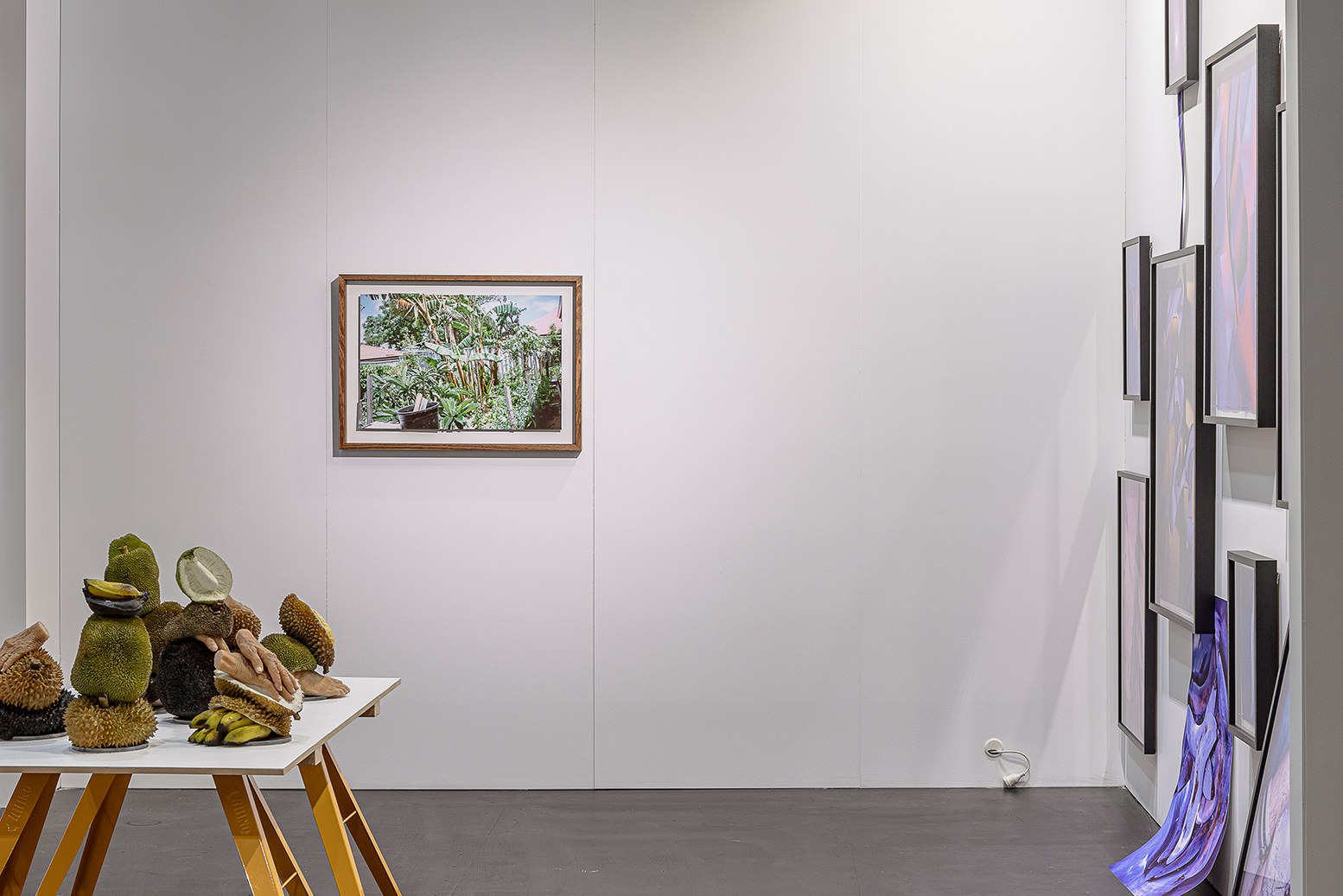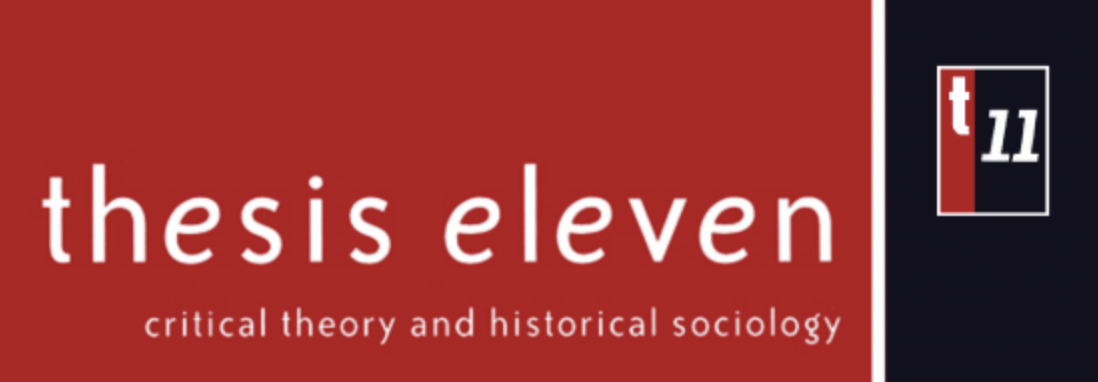



Sweet pea’s 2023 exhibition program nears its conclusion with Boo Boo Ragout (mistake stew), a collection of new paintings by Iain Dean currently on display until Saturday 18 November. The work is a colourful regurgitation of influences, most prominently Colin McCahon and Brent Harris, the latter of whom mentored Dean some years ago. Dean’s show is a high-saturation and “deskilled” finale to a busy year at sweet’s pea’s 58 Pier St gallery. On top of maintaining a steady program of exhibitions, founder Andrew Varano has curated several shows at Lawson Flats featuring artists from the sweet pea stable. Lawson Flats—the Lynchian member’s club for Perth’s young, landed gentry—has cultivated its own reputation as an alternative establishment for arts and culture. It has also divided the scene: some see it as a club for young capitalists to show off their latest pieces from Dilettante, others consider it as means for fostering the kind of cultural and creative philanthropy so desperately needed in WA—a place where a curious, culturally-minded upper-middle class can congregate for alternative art experiences. It’s complicated. On top of all this activity, sweet pea also recently hit the road for Sydney Contemporary, where it held its inaugural stall. In all, Varano has worked tirelessly to situate sweet pea as one of Perth’s leading, perhaps only, alternative commercial galleries.
Parallel to this activity, sweet pea is supported by funding from the DLGSC, programs events like the recent Un Magazine launch, and maintains a sporadic online journal of interviews and writings. At first, these activities are more expected from a so-called “ARI” (Artist Run Initiative) and, I first thought, at odds with sweet pea’s function as a commercial gallery—this duality of ARI/commercial gallery evidenced in recent articles in Un Projects and Art Collector Magazine.1
Sweet pea represents WA artists including Curtis Taylor, Nathan Beard, Jess Tan, Bruno Booth, Tim Meakins and Emma Buswell. For the latter three, “play” is an integral quality, and their most recent respective exhibitions certainly have avoided any overt commerciality. They felt like ARI shows (if you will excuse this anecdotal “vibe check”). The gallery is simple, crisp, playful, and funky, conjuring a mellow and measured ambience. Sweet pea’s online presence is, to me, a touch too sweet—saccharine—but defined, distinct, and in-vogue. This deliberate sense of play is consistent with the experimental intention of an ARI. Experimentation often runs the risk of varied outcomes—in many respects, these risky and varied outcomes are part of the appeal of many ARIs. It is also incongruous with the intentions of the average commercial gallery. Perhaps this is why I perceive sweet pea’s “sincere playfulness” as twee: a combination of democratising playfulness and aggrandising earnestness which codes the gallery as both egalitarian and accomplished.
During a debate with friends I was alerted to the possibility that this “dialectic” of experimental and commercial space had already been synthesised elsewhere. Spaces like Melbourne’s Neon Parc had, years prior, successfully fused the logics of experimental arts and commercial galleries. For sweet pea, this fusion seems successful also.
Sweet pea’s presence at Sydney Contemporary offers further insights. Along with them, only two other WA galleries held stalls: Moore Contemporary and Art Collective WA. Perhaps from outside WA this selection might appear a rather average cross-section of a gallery scene; an artist-run commercial space (Art Collective), a more customary contemporary gallery (Moore), and an alternative commercial space (sweet pea). All three have distinct stables of contemporary WA artists. From inside the WA art world each represent a significant proportion of the gallery scene, as well as a quantity of WA’s artists with interstate careers. So, perhaps one could be forgiven for viewing sweet pea as an oddity, a hybrid—however, parallels are plentiful.
Notwithstanding, the hybrid model remains mysterious to me. Is sweet pea perceived as an ARI within the State, and a commercial gallery outside of WA? A home for local artists, and a platform for WA artists to be viewed in concert with national counterparts? Is this straddling of art worlds symptomatic of WA’s precarious gallery scene—i.e., do our local conditions necessitate practices that are at odds with the expectations held outside the State? If so, this surely qualifies sweet pea as one of WA’s most nimble commercial galleries.
And just to circle back to the DLGSC funding—do WA commercial galleries need government funding? Probably yes, at least until we see the wealthiest state in Australia develop a taste for collecting its own art.
Sweet pea at Sydney Contemporary.
Current show: Iain Dean, Boo Boo Ragout (mistake stew), 7 Oct – 18 Nov 2023, sweet pea.
1. Two recent articles, in Un Project and Art Collector Magazine respectively, with the same author demonstrates these multiple perceptions of sweet pea. In Un Project, curator and writer Jessyca Hutchens described sweet pea as having “the gentleness and experimental feel of an ARI”, and also listed sweet pea in a “new dealer” section of Art Collector, recognising the gallery’s commercial purpose.
Photos by Document Photography, courtesy of sweet pea, featuring work by Jack Ball and Nathan Beard at Sydney Contemporary 2023.
Parallel to this activity, sweet pea is supported by funding from the DLGSC, programs events like the recent Un Magazine launch, and maintains a sporadic online journal of interviews and writings. At first, these activities are more expected from a so-called “ARI” (Artist Run Initiative) and, I first thought, at odds with sweet pea’s function as a commercial gallery—this duality of ARI/commercial gallery evidenced in recent articles in Un Projects and Art Collector Magazine.1
Sweet pea represents WA artists including Curtis Taylor, Nathan Beard, Jess Tan, Bruno Booth, Tim Meakins and Emma Buswell. For the latter three, “play” is an integral quality, and their most recent respective exhibitions certainly have avoided any overt commerciality. They felt like ARI shows (if you will excuse this anecdotal “vibe check”). The gallery is simple, crisp, playful, and funky, conjuring a mellow and measured ambience. Sweet pea’s online presence is, to me, a touch too sweet—saccharine—but defined, distinct, and in-vogue. This deliberate sense of play is consistent with the experimental intention of an ARI. Experimentation often runs the risk of varied outcomes—in many respects, these risky and varied outcomes are part of the appeal of many ARIs. It is also incongruous with the intentions of the average commercial gallery. Perhaps this is why I perceive sweet pea’s “sincere playfulness” as twee: a combination of democratising playfulness and aggrandising earnestness which codes the gallery as both egalitarian and accomplished.
During a debate with friends I was alerted to the possibility that this “dialectic” of experimental and commercial space had already been synthesised elsewhere. Spaces like Melbourne’s Neon Parc had, years prior, successfully fused the logics of experimental arts and commercial galleries. For sweet pea, this fusion seems successful also.
Sweet pea’s presence at Sydney Contemporary offers further insights. Along with them, only two other WA galleries held stalls: Moore Contemporary and Art Collective WA. Perhaps from outside WA this selection might appear a rather average cross-section of a gallery scene; an artist-run commercial space (Art Collective), a more customary contemporary gallery (Moore), and an alternative commercial space (sweet pea). All three have distinct stables of contemporary WA artists. From inside the WA art world each represent a significant proportion of the gallery scene, as well as a quantity of WA’s artists with interstate careers. So, perhaps one could be forgiven for viewing sweet pea as an oddity, a hybrid—however, parallels are plentiful.
Notwithstanding, the hybrid model remains mysterious to me. Is sweet pea perceived as an ARI within the State, and a commercial gallery outside of WA? A home for local artists, and a platform for WA artists to be viewed in concert with national counterparts? Is this straddling of art worlds symptomatic of WA’s precarious gallery scene—i.e., do our local conditions necessitate practices that are at odds with the expectations held outside the State? If so, this surely qualifies sweet pea as one of WA’s most nimble commercial galleries.
And just to circle back to the DLGSC funding—do WA commercial galleries need government funding? Probably yes, at least until we see the wealthiest state in Australia develop a taste for collecting its own art.
Sweet pea at Sydney Contemporary.
Current show: Iain Dean, Boo Boo Ragout (mistake stew), 7 Oct – 18 Nov 2023, sweet pea.
1. Two recent articles, in Un Project and Art Collector Magazine respectively, with the same author demonstrates these multiple perceptions of sweet pea. In Un Project, curator and writer Jessyca Hutchens described sweet pea as having “the gentleness and experimental feel of an ARI”, and also listed sweet pea in a “new dealer” section of Art Collector, recognising the gallery’s commercial purpose.
Photos by Document Photography, courtesy of sweet pea, featuring work by Jack Ball and Nathan Beard at Sydney Contemporary 2023.
